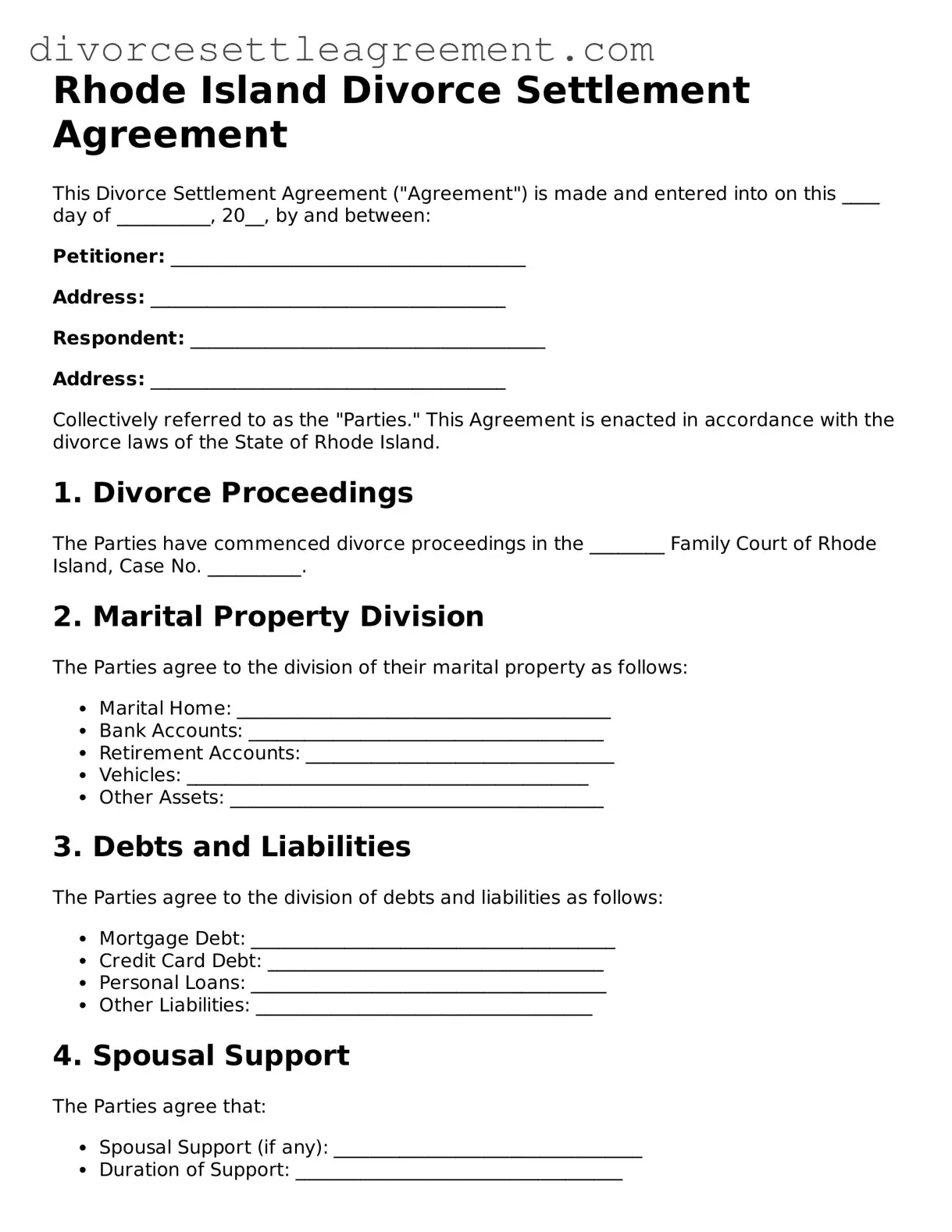What is a Divorce Settlement Agreement in Rhode Island?
A Divorce Settlement Agreement is a legally binding document that outlines the terms of a divorce between two parties. It covers various aspects, including division of property, child custody, visitation rights, and spousal support. This agreement is crucial as it helps both parties reach a mutual understanding and can simplify the divorce process.
Why is a Divorce Settlement Agreement important?
This agreement is important because it provides clarity and structure to the divorce process. It ensures that both parties are on the same page regarding financial obligations and responsibilities toward children. A well-drafted agreement can prevent future disputes and serve as a reference point for both parties.
What should be included in a Divorce Settlement Agreement?
Key components of a Divorce Settlement Agreement typically include the division of assets and debts, child custody arrangements, child support payments, visitation schedules, and spousal support terms. Each section should be detailed to avoid ambiguity and ensure that both parties understand their rights and responsibilities.
How is a Divorce Settlement Agreement created?
The creation of a Divorce Settlement Agreement usually involves negotiation between the parties. It can be drafted by one party or collaboratively with the help of attorneys or mediators. Once both parties agree on the terms, the document should be signed and notarized to make it legally enforceable.
Can a Divorce Settlement Agreement be modified?
Yes, a Divorce Settlement Agreement can be modified after it has been finalized, but both parties must agree to the changes. Modifications often occur due to significant life changes, such as job loss or changes in child custody needs. It is advisable to document any modifications formally to ensure they are enforceable.
Do I need a lawyer to create a Divorce Settlement Agreement?
While it is not legally required to have a lawyer, it is highly recommended. A lawyer can provide valuable guidance, ensure that your rights are protected, and help draft an agreement that meets legal standards. This can be particularly important if there are complex issues, such as significant assets or children involved.
How long does it take to finalize a Divorce Settlement Agreement?
The time it takes to finalize a Divorce Settlement Agreement varies depending on the complexity of the issues and the willingness of both parties to negotiate. Some agreements can be reached quickly, while others may take weeks or even months. Patience and open communication can help speed up the process.
What happens if we cannot reach an agreement?
If the parties cannot reach an agreement, the case may proceed to court. A judge will then make decisions regarding asset division, custody, and support based on the evidence presented. This can be a lengthy and costly process, so it is generally in both parties' best interests to try to negotiate a settlement.
Is a Divorce Settlement Agreement enforceable?
Yes, once signed and notarized, a Divorce Settlement Agreement is enforceable in court. If one party fails to comply with the terms, the other party can seek legal recourse. Courts typically uphold these agreements, provided they are fair and both parties entered into them voluntarily.
Where can I find a template for a Divorce Settlement Agreement?
Templates for Divorce Settlement Agreements can often be found online through legal aid websites, state court websites, or legal document services. However, it is advisable to consult with a legal professional to ensure that any template used meets the specific requirements of Rhode Island law and addresses your unique situation.
